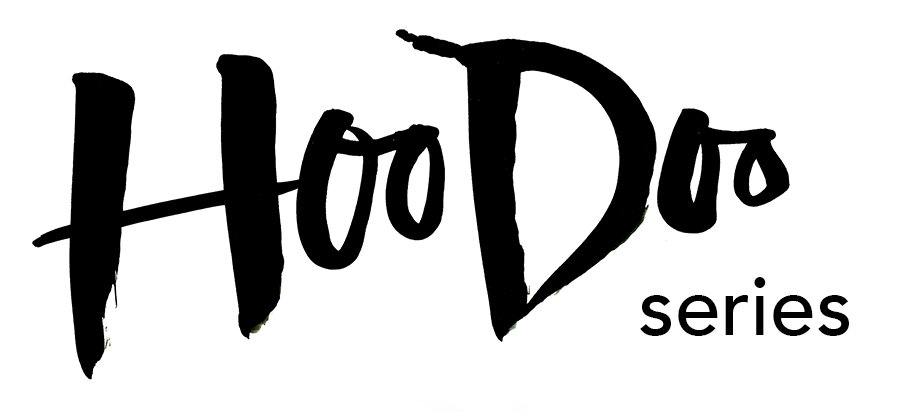Ronlewhorn Industries
Aaron Scamihorn is an art director by day, and silk screen printer/graphic designer/illustrator by night. AJ, his wife, works along-side him and is ‘quality control manager.' Together they are RONLEWHORN INDUSTRIES.
Do you print mostly your own designs? Do you screen print others’ designs?
Aaron: Almost 100% my own stuff. I have taken on a handful of contract print jobs. People who have something fun or interesting. I’m happy to help them out. Primarily it’s my own stuff…This is my passion project. I do the corporate-y stuff by day. I want to keep myself creatively re-energized. At this point it’s 50% gig posters and 50% art prints.
What do you do AJ?
AJ: I am an account coordinator at a design firm. I do that by day and helping him out takes up the rest of my time. I’m learning a lot about the [screen printing and design] process. There are plans in the works to get my own table this year.
Do you usually do pretty well at craft shows?
Aaron: We do. It takes proper strategy. We’ve learned over the years. For instance we need to have new stuff [that is different] from the previous year. Indianapolis isn’t a huge market, those kinds of [craft shows] are often a pretty similar demographic. If you’ve done a couple craft shows in town then they’ve probably seen what you have at least once.
AJ: You also need to have a good mix of sizes. Wall space comes at a premium for most people.
Some years all I’ve had are giant posters, I don’t do so well. When I have more art prints and smaller stuff [giving] people options, everything sells better. The bigger stuff sells well when they have the option of the smaller stuff. They look at the smaller stuff [but then decide to buy] the larger print!
We’ve been prepping a lot of stuff for a show coming up. The Indieana Handicraft Exchange.Aaron: (June 13th, 12-8pm, Indianapolis)
How did you get started screen printing?
Aaron: I grew up playing in bands. I really love music and [wanted to stay connected to] music…Growing up, my parents were potters and my dad was an art teacher. Everything we did growing up was very hands on. [I work in] a cubicle and the digital design world. The one thing that was missing from the process for me was creating something with my hands.
I started doing a lot of show flyers, and [I was] looking at a lot of gig posters. I began to have this desire to figure out [how to screen print.] With the help of YouTube and some buddies who had a t-shirt printing business…I began trying to figure it out. There was a lot of trial and error.
Aaron: The first band that was coming to town that [hired] me [to design and screen print their gig posters] was Mayor Hawthorne. After the show, we got to chat about it, and he said, 'I’ve had a lot of gig posters done for me man, but this, this is the shit!' That solidified it for me. I want to do this! From there I got the one for Cake. Now I’ve done seven for them. Having those in the portfolio gets a lot of other bands to work with me.
When you are working on a new design, do you hand draw or design it on the computer?
Aaron: It depends. This design [that I’m printing now] was 100% digital. I’m working on a piece right now for Gallery 1988 out in LA. They do pop culture shows. [The show coming up] is a tribute to Tom Hanks. (June 13-20, Los Angeles) My piece is [inspired by] the film The ‘Burbs. It was all hand done. I used a light box, photo references, tracing paper… And then scan it into the computer for layout. I do a lot of my typography by hand. The DropKick Murphy’s gig poster was all digital, but I did the type by hand.
Aaron: Early on, [an older artist] was giving me advice about the industry and whatnot, his first advice was, “Robots and pretty girls are what sells. Do as many robots and pretty girls as you can...” He also gave me advice about type layout and, 'You can have the best illustration in the world, but with bad type it’s still a throw away. A crappy illustration with great type can be an awesome poster.' I put a lot of time and effort into making sure that [my type] is solid.
That’s interesting how language is a larger draw than pictures.
“It’s crazy how some people do these illustrations and they’re so basic but they have these really cool types surrounding them. [It’s frustrating because] I put so much time into my illustration AND my type. You never know what people are going to be drawn to, but when it looks really bad, people can tell.”
Find Aaron:
ronlewhorn.com
instagram
